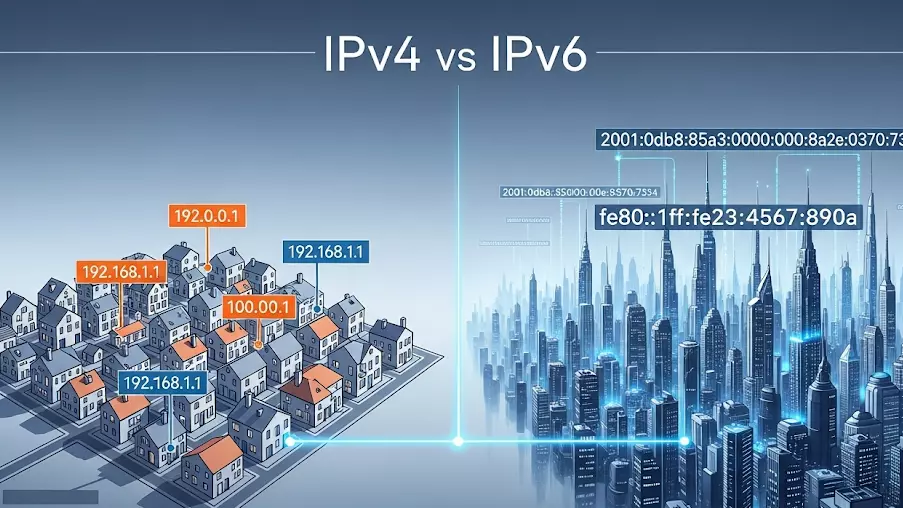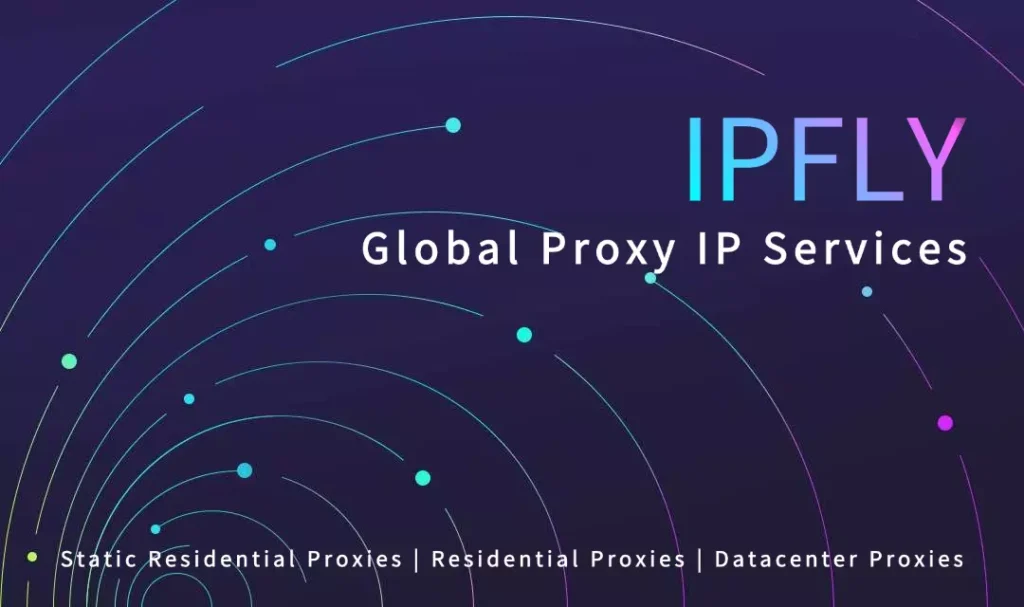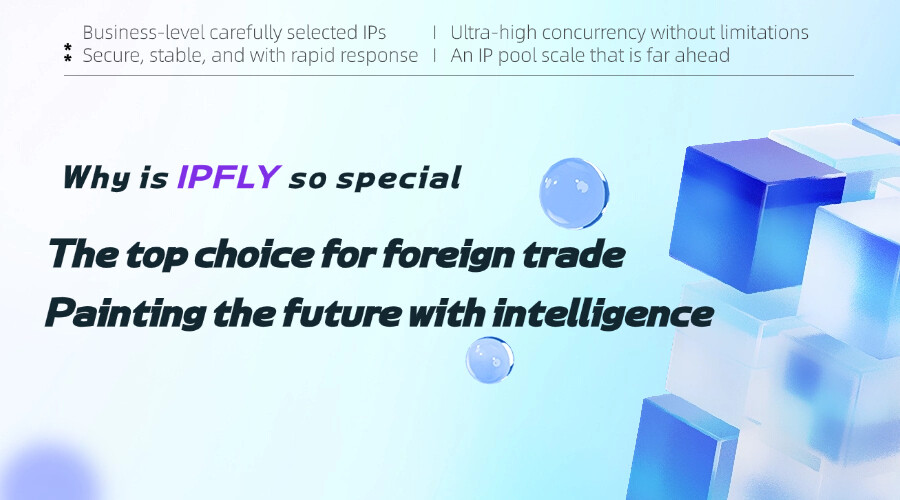When you connect to the internet, every device needs an IP address. These addresses act like digital home addresses, telling websites and servers where to send data. For decades, most of the internet has run on IPv4, but with billions of new devices connecting every year, a new standard called IPv6 has become increasingly important.
In this article, we’ll break down the differences between IPv4 andIPv6, why they matter for your network, and how proxies play a role in ensuring smooth, secure connectivity.

What Is the Internet Protocol (IP)?
The Internet Protocol (IP) provides the rules for sending and receiving data packets across networks, helping devices reach the right destination. Because every device needs a unique identifier, that’s where IP addresses come in—essentially digital “street addresses” in the online world. IPFLY believes understanding this foundational element is key to managing modern networks effectively.
IPv4: The Workhorse of the Internet
IPv4, introduced in 1983, is the original version of IP still widely used today. It uses a 32-bit address space, allowing for approximately 4.3 billion unique addresses, though many are reserved for private networks and special cases—leading to early depletion issues.
IP addresses in IPv4 are written in dot-decimal notation, such as 192.168.10.150. IPv4 also relies heavily on NAT (Network Address Translation) to stretch the available pool for many devices.
IPv6: The Future-Proof Replacement
IPv6 was developed to address IPv4’s limitations, especially due to its insufficient address space. It uses a 128-bit address format, offering a gargantuan number of unique IPs—340 undecillion (that’s 3.4 × 10^38)!
IPv6 addresses are expressed using eight groups of hexadecimal digits, like 3002:0bd6:0000:0000:0000:ee00:0033:6778, with built-in shorthand to compress zeros. Beyond address space, IPv6 includes these enhancements:
- Eliminates the need for NAT, enabling true end-to-end connections.
- Built-in IPSec support, offering integrated authentication and encryption capabilities.
- Streamlined header design and multicast support, improving routing and efficiency.
- Simplified network assignment via SLAAC (Stateless Address Autoconfiguration), reducing reliance on DHCP.
IPv4 vs IPv6: Side-by-Side Comparison
Here’s a breakdown of key differences:
| Feature | IPv4 | IPv6 |
| Address Length | 32-bit (~4.3 billion addresses) | 128-bit (~3.4 × 10^38 addresses) |
| Notation | Decimal, dot-separated | Hexadecimal, colon-separated |
| NAT Required? | Yes | No, allowing end-to-end connectivity |
| Security (IPSec) | Optional | Originally mandatory (now recommended) |
| Multicast Support | Optional, uses broadcast | Built-in multicast, no broadcast |
| Header Efficiency | Complex, resource-heavy | Simplified design for faster processing |
| Auto Configuration | Mostly DHCP | SLAAC support included |
Why IPv6 Adoption Has Been Slow
Despite the advantages, many networks still run primarily on IPv4. Reasons include:
- Compatibility: Some older systems and applications only work with IPv4.
- Cost: Upgrading to IPv6 infrastructure can be expensive.
- Transition Complexity: Dual-stack environments (running IPv4 and IPv6 together) require careful management.
As a result, the internet today is in a hybrid state, with both IPv4 and IPv6 in use.
Where Proxies Fit into IPv4 and IPv6
One area where the IPv4 vs IPv6 debate becomes especially relevant is in proxy networks. Proxies act as intermediaries between users and the internet, masking original IPs for security, privacy, or business purposes.
Here’s how proxies are influenced by IPv4 and IPv6:
- IPv4 Proxies
- Still widely used because most websites and applications primarily support IPv4.
- Often more expensive because IPv4 addresses are limited and in high demand.
- IPv6 Proxies
- Offer a virtually unlimited pool of IPs.
- Cheaper in many cases, but not all websites and platforms support IPv6 fully yet.
- Dual-Stack Proxy Solutions
- Many businesses rely on proxy providers that can handle both IPv4 and IPv6 traffic, ensuring compatibility across platforms.
How Businesses Use IPv4 and IPv6 Proxies
Different industries use proxies depending on their goals:
- E-commerce: Price monitoring and inventory tracking often rely on IPv4 proxies because most websites are still IPv4-based.
- SEO & Marketing: IPv6 proxies can provide fresh IP pools for large-scale scraping and rank tracking.
- Streaming & Social Media: Global access often requires providers that support both IPv4 and IPv6.
IPFLY’s Approach to IPv4 and IPv6

At IPFLY, we understand the importance of supporting both protocols in proxy services. Our residential proxies, ISP proxies, and datacenter proxies are compatible with IPv4 and IPv6, giving businesses flexibility in global operations.
- With IPv4 proxies, our clients can access legacy systems and websites that still rely on older infrastructure.
- With IPv6 proxies, they gain access to vast pools of addresses, reducing IP bans and increasing efficiency in tasks like web scraping or automation.
This dual compatibility ensures that companies can adapt smoothly, no matter how quickly IPv6 adoption grows worldwide.
The Future of IPv4 and IPv6
Looking ahead, IPv6 adoption will continue to expand as more devices demand unique IP addresses. However, IPv4 won’t disappear overnight. Instead, we’ll see a long period of coexistence, where proxies and networks must support both.
For businesses, the key takeaway is this: choosing tools and services that work with both protocols will future-proof your operations.
Conclusion

The IPv4 vs IPv6 debate isn’t about one completely replacing the other—it’s about learning how they work together. While IPv4 remains dominant today, IPv6 represents the future of internet connectivity. For businesses using proxies, this means ensuring access to dual-stack solutions that support both protocols seamlessly.
By understanding these differences and leveraging proxy networks like those from IPFLY, organizations can stay ahead in a rapidly evolving digital world.
Join IPFLY’s Telegram channel and never miss important proxy trends again.


